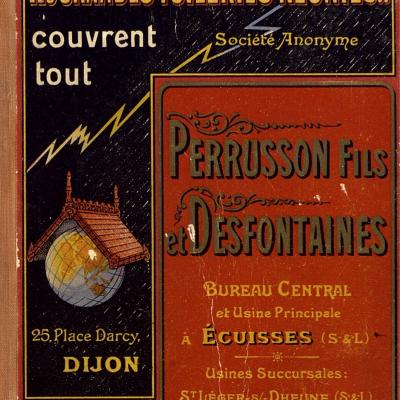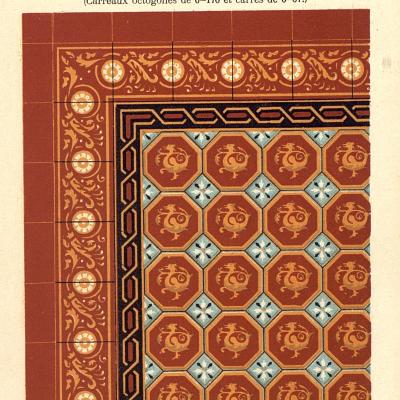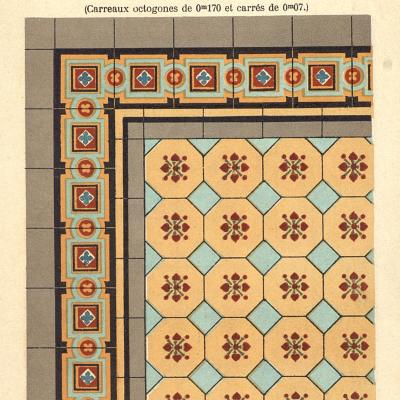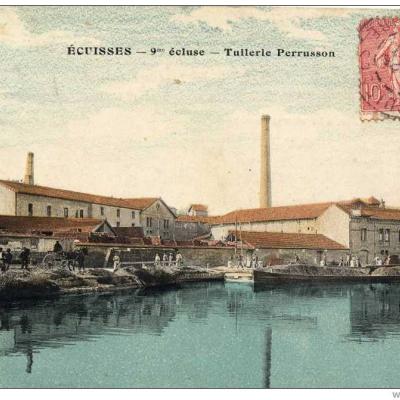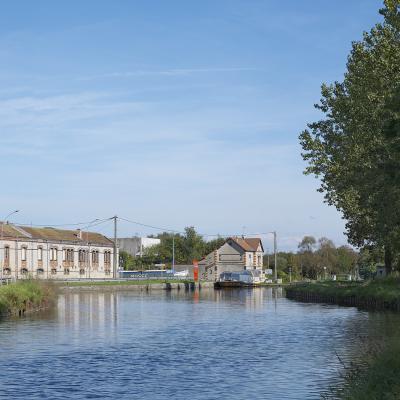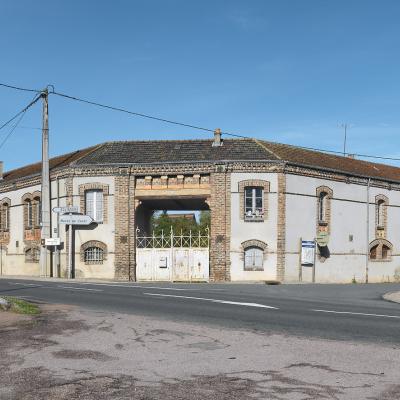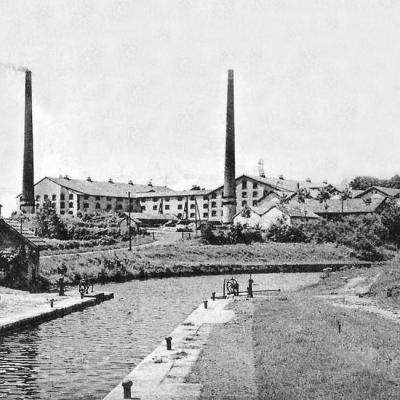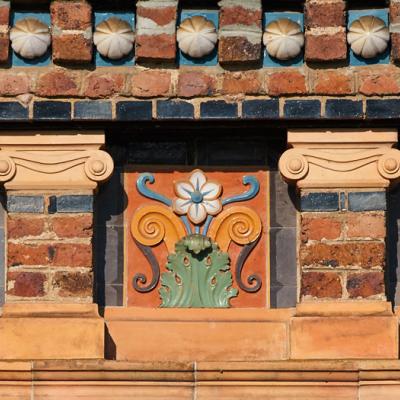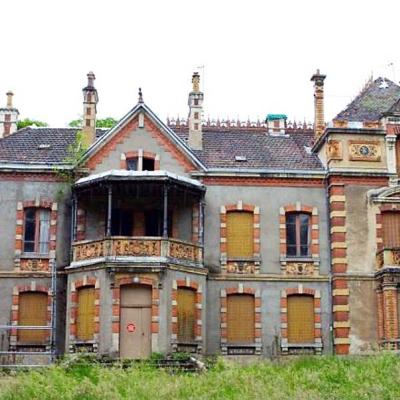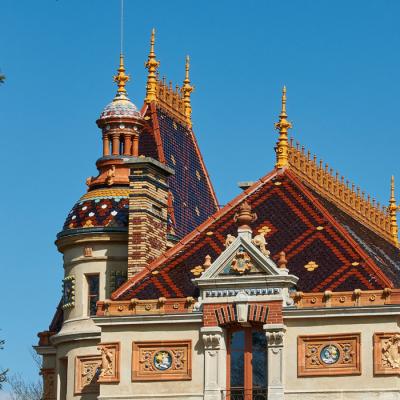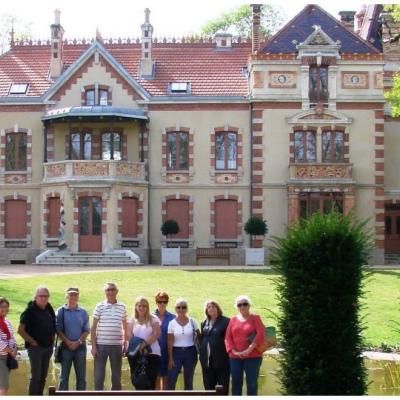A large c.23m2 handmade Perrusson floor, c.1900
We present a large and rare c23m2 / 258 sq ft handmade ceramic encaustic floor manufactured in 1900 by Perrusson et Fils, Desfontaines, France and consisting of a principal heraldic dragon themed octagon field tile, complimented by a cross themed cabochon. The floor is framed by a 17cm border tile, for which all four corner tiles are present and a geometric half size border, with its 8 border corners.
The floor has been reclaimed from a Haussmann style hotel in the Bresse region of France which is currently being converted into apartments.
17mm thick and weighing over a kilo each these are pedigree heritage ceramics. The floor has cleaned superbly; the colours remain crisp and vibrant and the floor displays all the charm and character associated with individually handmade tiles. A small number of tiles display small chips or edge nibbles, all to be expected of a floor well over 100 years old and all groutable. The floor is in excellent condition.
This is a unique and rare floor.
Being highly fired it can be laid inside or outside of the home and will work efficiently with underfloor heating systems. It is one of five floors reclaimed from the same hotel.
A couple of scans from the original Perrusson catalogue of 1910, showing the tiles, are included in the photo gallery. Additionally, we have included some photographs of the Perrusson factory, long since closed, and the magnificent family home, which has been lovingly restored from decades in its derelict state and which is covered in their tiles; a testimony to their outstanding work.
Tile quantities:-
Principal octagon field tiles – 495.
Field tile cabochons – 420.
Combined total – 14.5m2 / 155 sq ft.
Large borders – 170 plus 4 corners – 5m2 or 29.6 linear metres / 97 linear feet.
Half size borders – 240 plus 8 corners – 3.5m2 or 41.5 linear metres / 136 linear feet.
Ceramiques Perrusson, Ecluses - a brief history;
Jean-Marie Perrusson was not only known for ceramic tile production but also for the production of bricks and roof tiles. Many of the lozenge themed terracotta mechanical tiles in Burgundy bear the Perrusson hallmark. He built his first brick making factory in 1860 and started mechanical tile production in 1863, to which he added a workshop for manufacturing ceramic tiles in 1875. Further expansion of the ceramic tile production in the Saône-et-Loire was initiated (in Saint-Julien-sur-Dheune in 1866, St. Pantaleon 1870), and even beyond the department (in Sancoins Cher in 1870 and Fontafié in Charente in 1878).
The company was renamed ‘Perrusson Fils et Desfontaines’ in 1890 and the factory also manufactured architectural ceramics and statues. In April 1960 the factory finally closed its doors. The vast majority of the original buildings constructed in 1890/1900 are destroyed with the offices, changing rooms of the factory, the concierge and the electrical workshop the only significant remnants of the site that can still be seen. The Perrusson factory employed 40 workers in 1860, 80 by 1874, 130 in 1890, 300 at its peak in 1900, 280 in 1930 and 130 during 1945 to 1950.
NOTE
Antique tiles were most commonly made in single or two tile moulds. Before current computer automation methods their moulds were made my hand and the colour slips mixed by eye. Kiln temperatures could also be variable, as could the firing time. The result is that often tiles display subtle size and thickness variations and there can be tonal variations in colours, owing to the slip mixing and/or firing time. All of this makes these handmade tiles unique and adds to their charm. Some floors display their subtle variations in size and tones, some not, but when photographing we always take a random section of the floor so that it is representative of the whole. A tiler should always dry lay a section of the tiles to familiarise himself with them before starting to fix lay.
CE267-1



